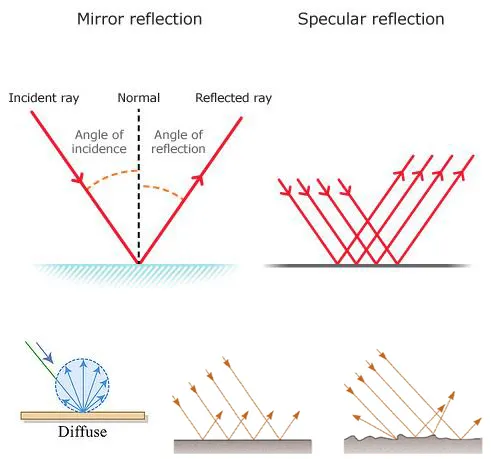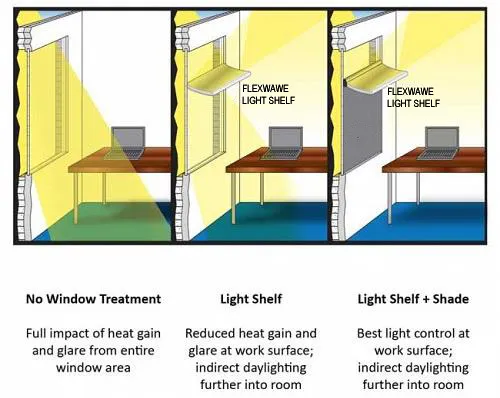If you want to know about the principles of daylighting design or climate and elements of climate or site climate, please click the link.
Daylighting refers to the use of natural light to illuminate buildings and spaces. It is a sustainable and energy-efficient method of lighting that helps to create comfortable and visually appealing environments, reduce energy consumption and lower carbon emissions.
1) Daylight

- Daylight is the combination of all direct and indirect sunlight during the daytime.
- This includes direct sunlight, diffuse sky radiation.
Artificial Light
- Light source – Itself
- Control by designers
Natural Light
- Light source- Sun , Sky
- Control by –Transmission & Distribution
Daylighting can be achieved through various techniques such as the use of windows, skylights, light shelves, and reflective surfaces. These techniques help to direct and diffuse natural light into the interior spaces, reducing the need for artificial lighting and contributing to energy savings.
In addition to energy savings, daylighting has been shown to have numerous health benefits, including reducing eye strain, increasing productivity, and improving overall well-being.
Architects and designers typically consider various factors such as orientation, building form, and the use of shading devices, to optimize the use of natural light in buildings. The use of daylighting can also be integrated with smart building control systems to automatically adjust lighting levels and shading devices based on changes in outdoor light conditions.
2) Day light section

Light can be distributed in 3 ways.
- Reflected (r) = Transparent surface
- Absorbed (a)= Opaque surface
- Transmitted (t)= Translucent surface
In all case : r+a+t=1
In case of opaque : t=0, r+a=1
3) Type of reflection
Specular :
- Each incident ray is reflected at the same angle. Surface is a plane mirror.
Spread :
- The angle of reflection is same as angle of Incident, from a convex mirror the reflected rays will be divergent.
Diffuse :
- Light reflect from a matt surface will be diffused.

4) Sky conditions
i) Clear sky

- Sky that has less than 30% cloud cover.
ii) Cloudy sky

- Sky having more than 70% cloud cover.
iii) Overcast sky

- Sky completely covered by clouds, no sun visible.
- The daylight factor in a particular building space depends upon a number of design factors including
- Size of daylight apertures (windows, etc.).
- Room geometry (height, width, and depth).
- Reflectance of room surfaces and contents.
- Reflectance of exterior surfaces affecting daylight entering the aperture.
- The effects of day-lighting enhancements (such as light shelves).
5) Light shelf
- A light shelf is a horizontal surface that reflects daylight deep into a building.
- Light shelves have high-reflectance upper surfaces, which reflect daylight onto the ceiling and deeper into the space.

- Reflecting material on the top of the light self.
- Allow a deeper penetration of light.

- Reduces hot spot at window. Use of artificial light can be Reduce.

6) Components of daylight
- Sky component
- Externally reflected component
- Internally reflected component

- A daylight factor (DF) is the ratio of the light level inside a structure to the light level outside the structure. It is defined as: DF = (Ei / Eo) x 100%
Ei = illuminance on the indoors working plane,
Eo = simultaneous outdoor illuminance on a horizontal plane
- The daylight factor concept is valid only under over cast sky conditions. When there is no direct sun light .
DF (daylight factor) = SC + ERC + IRC
Higher the window, greater the DF. & Deeper the penetration of light into space.
Overall, daylighting is an important aspect of sustainable building design and a key component of green building practices.